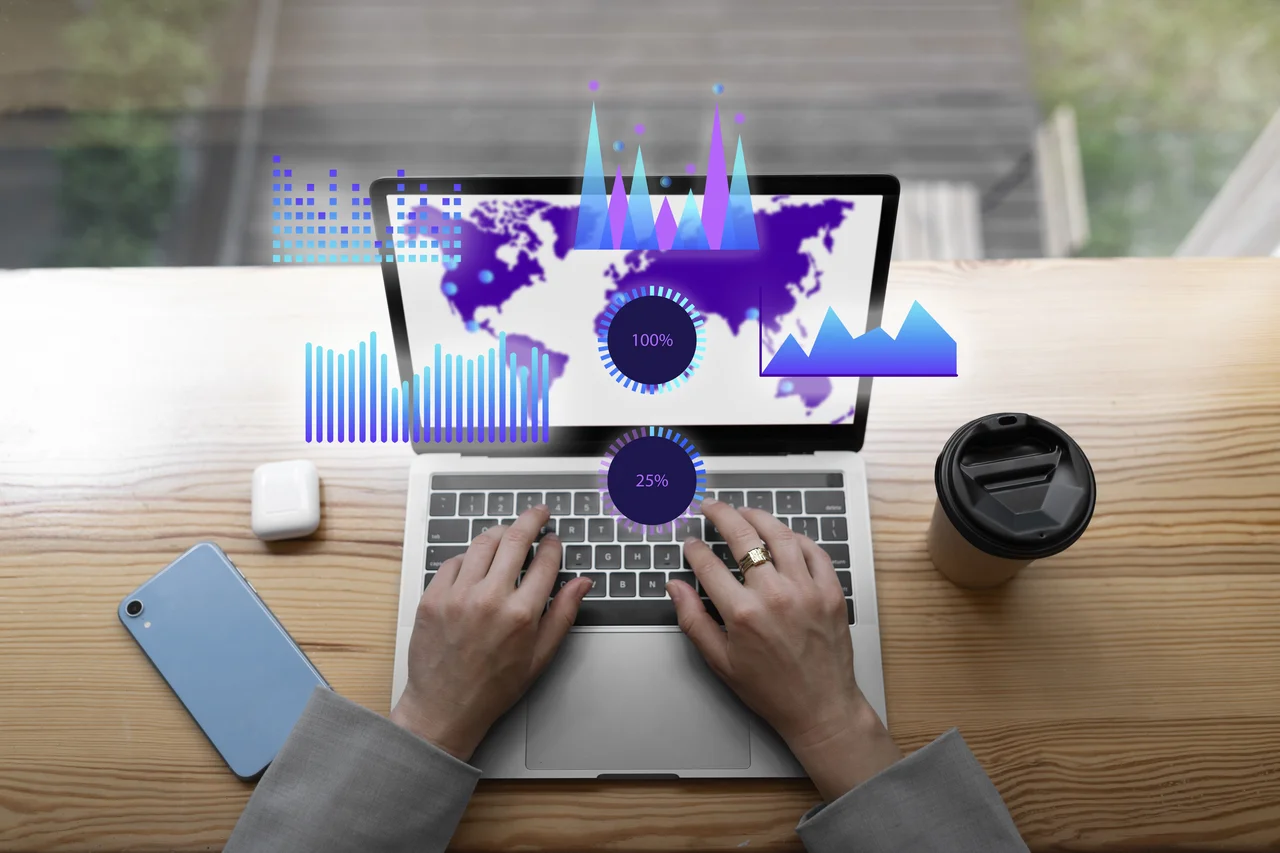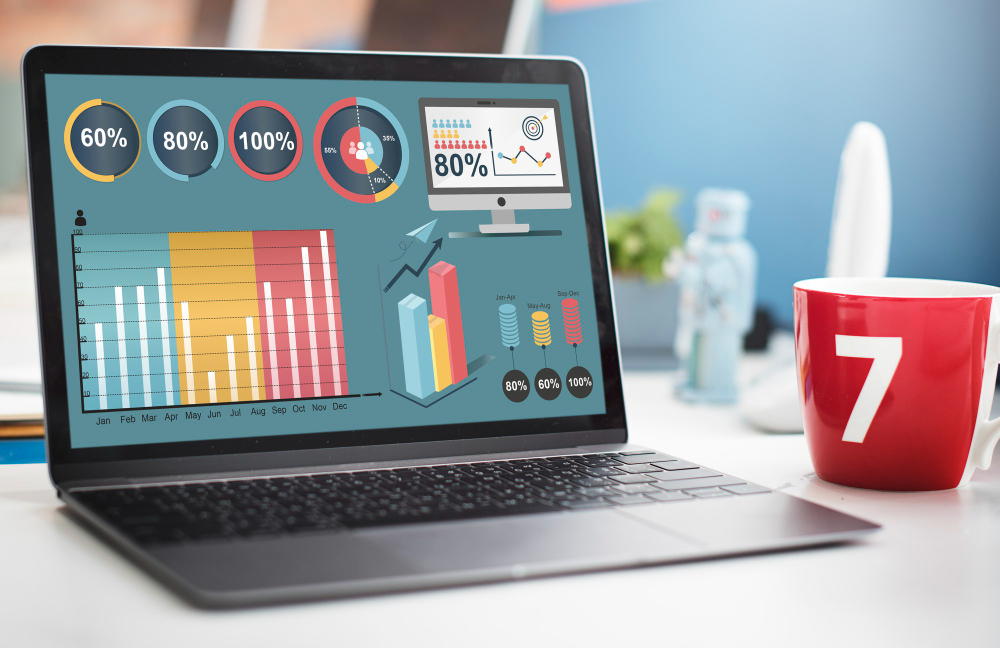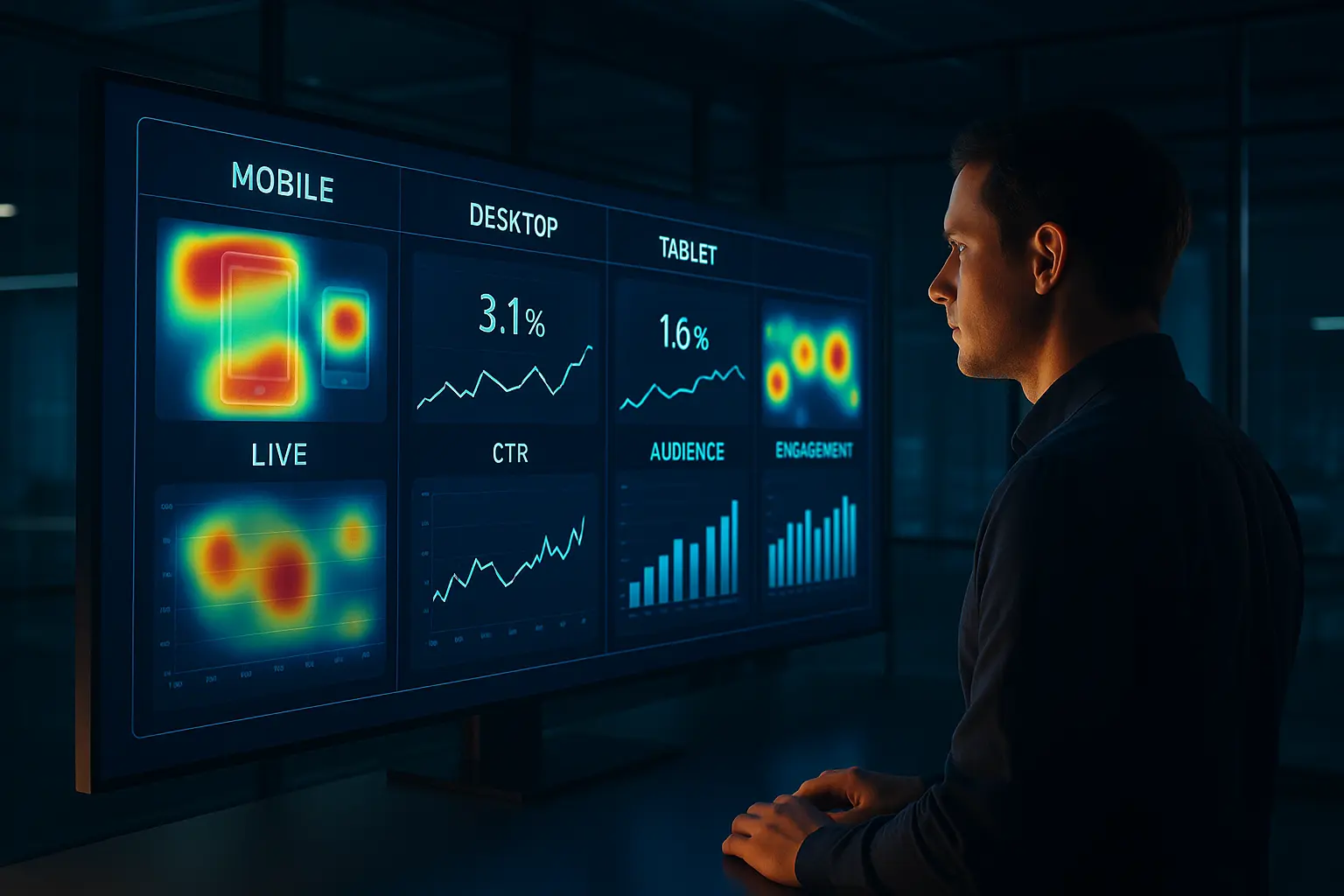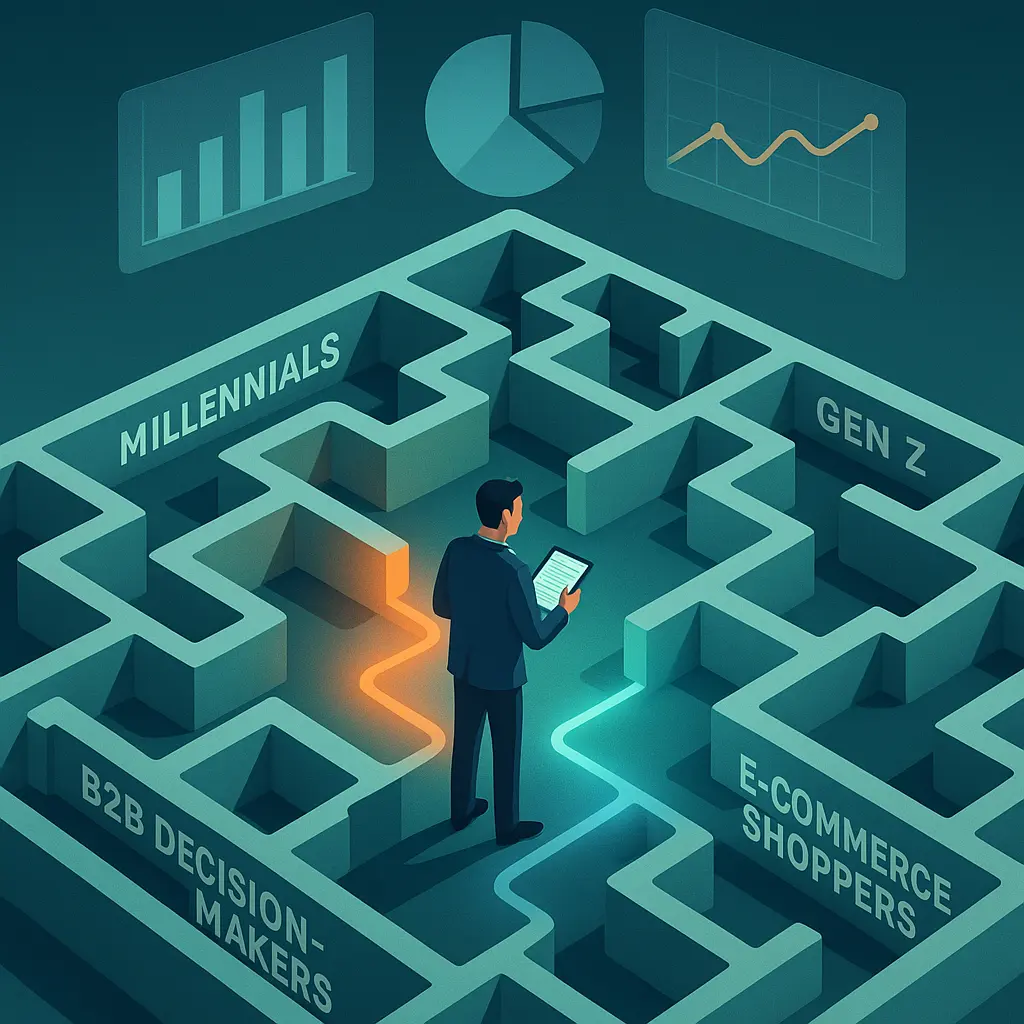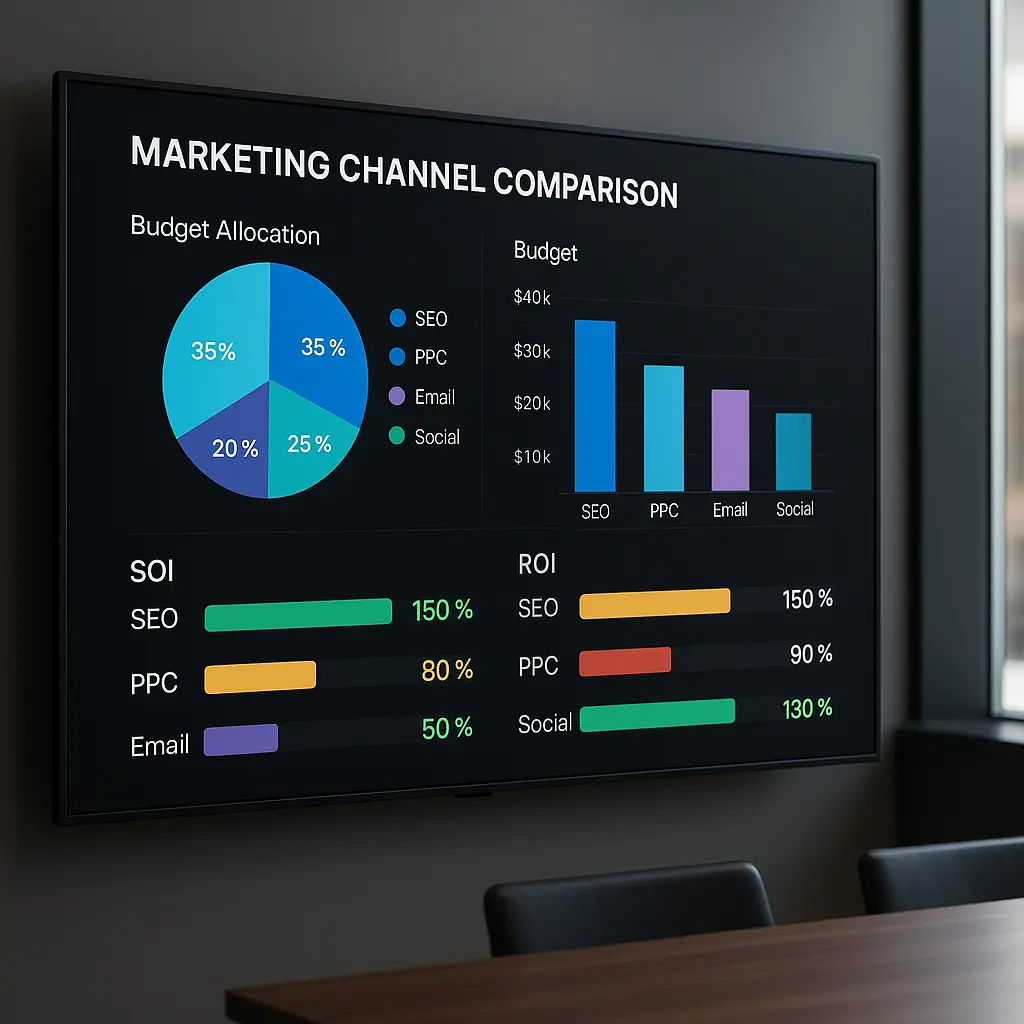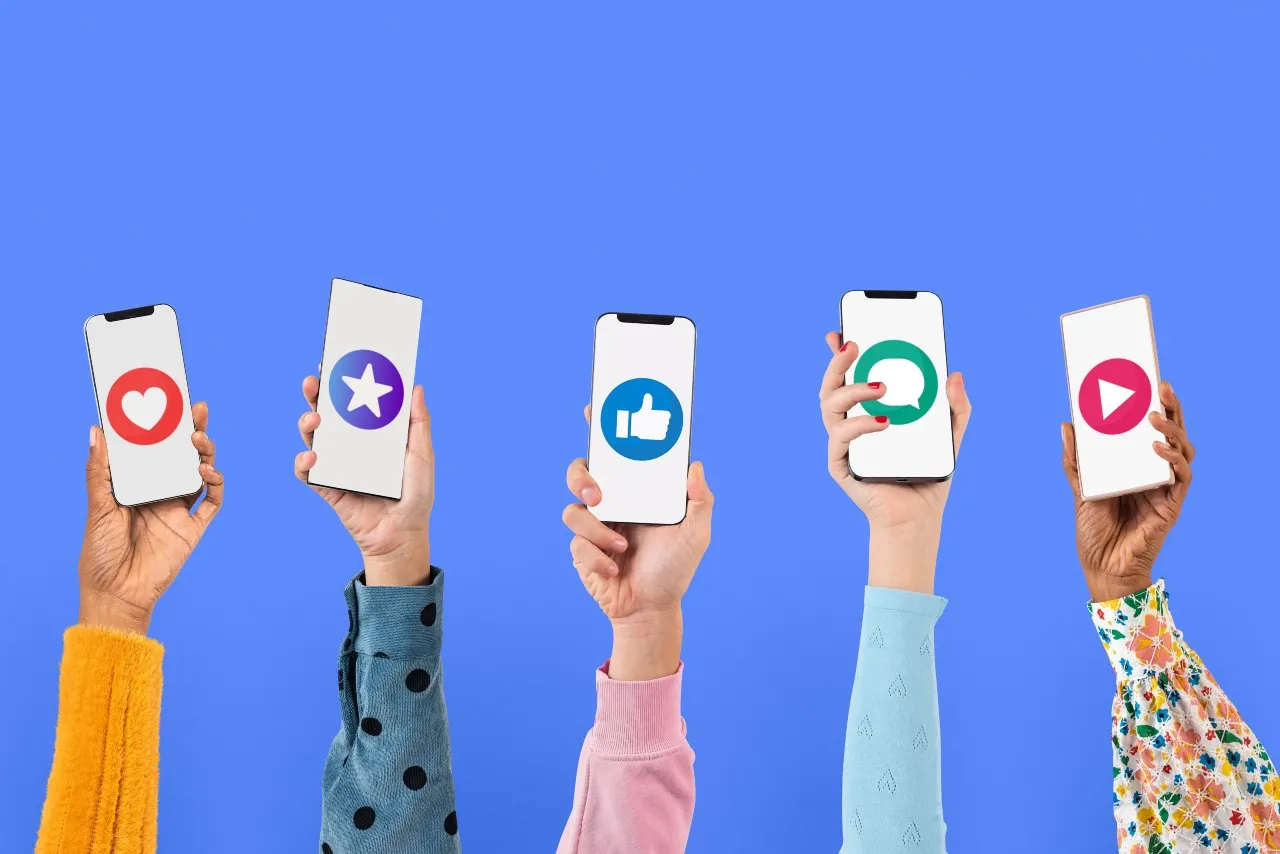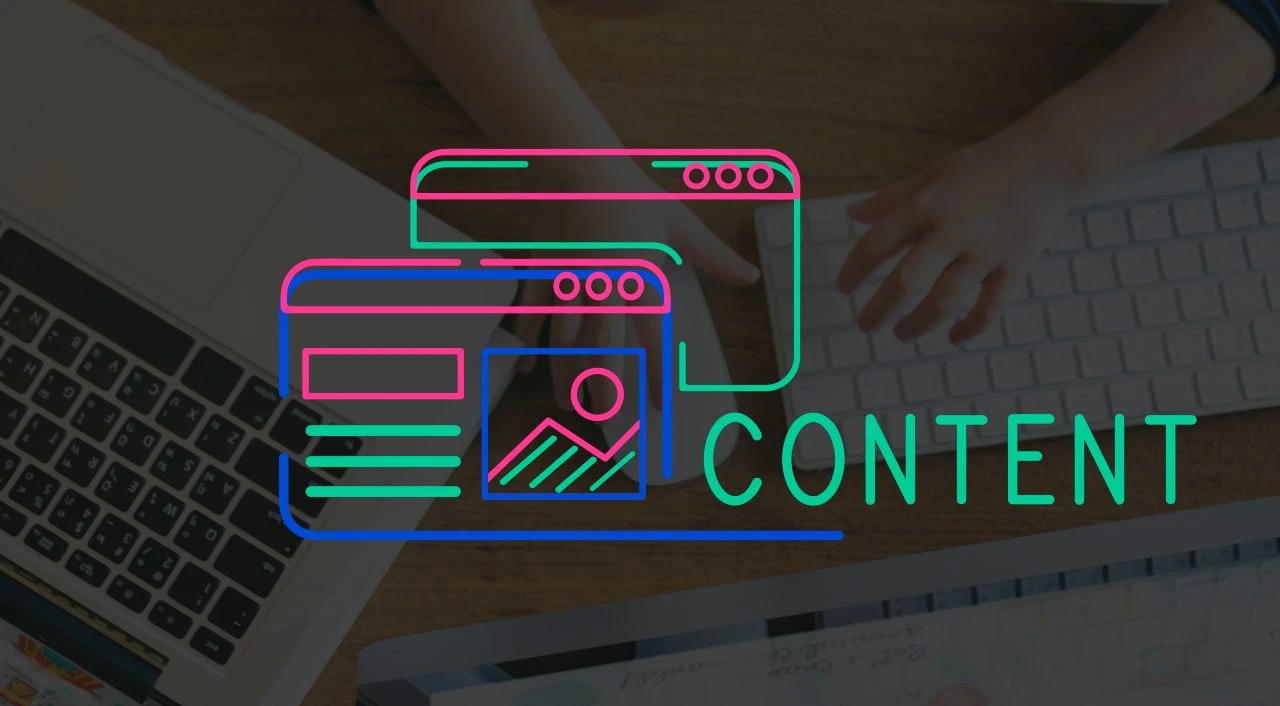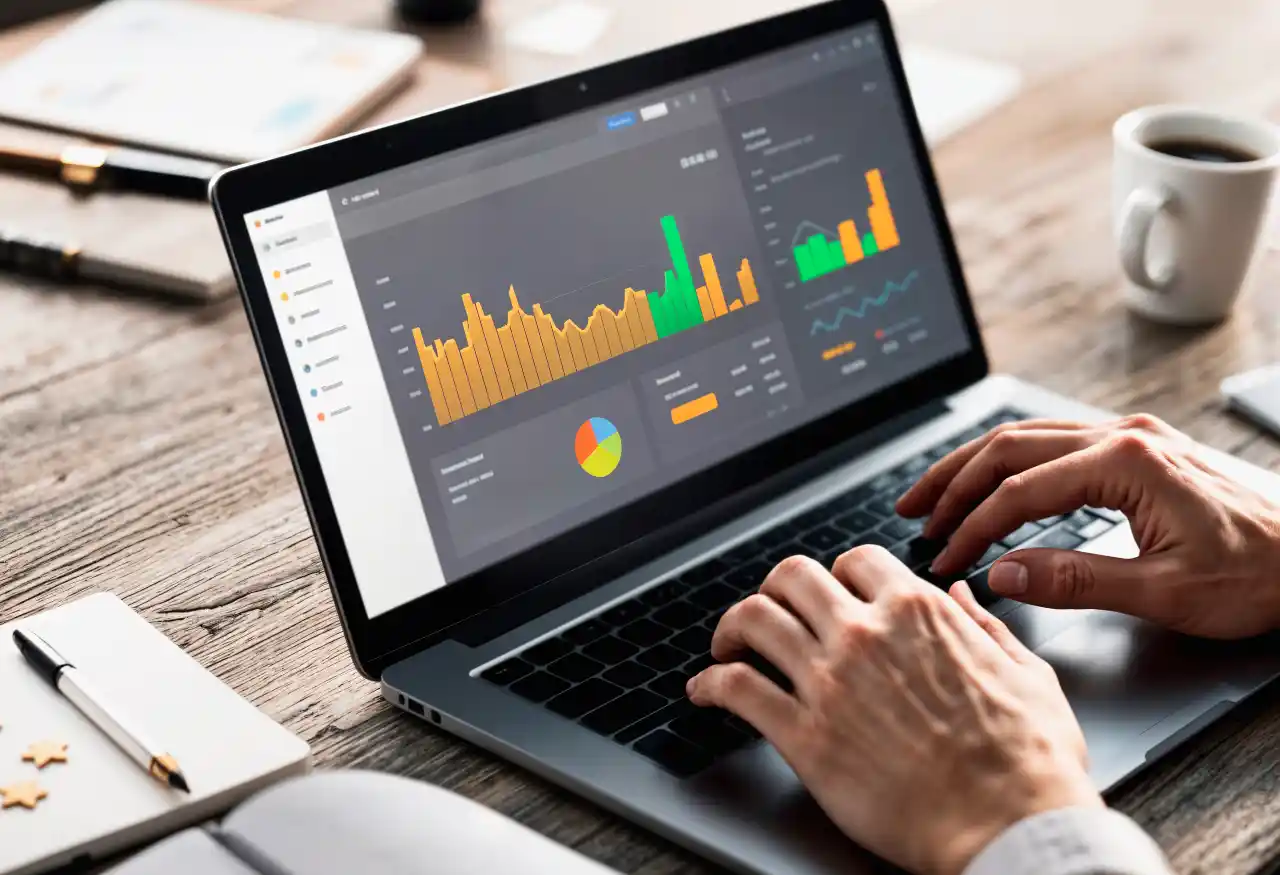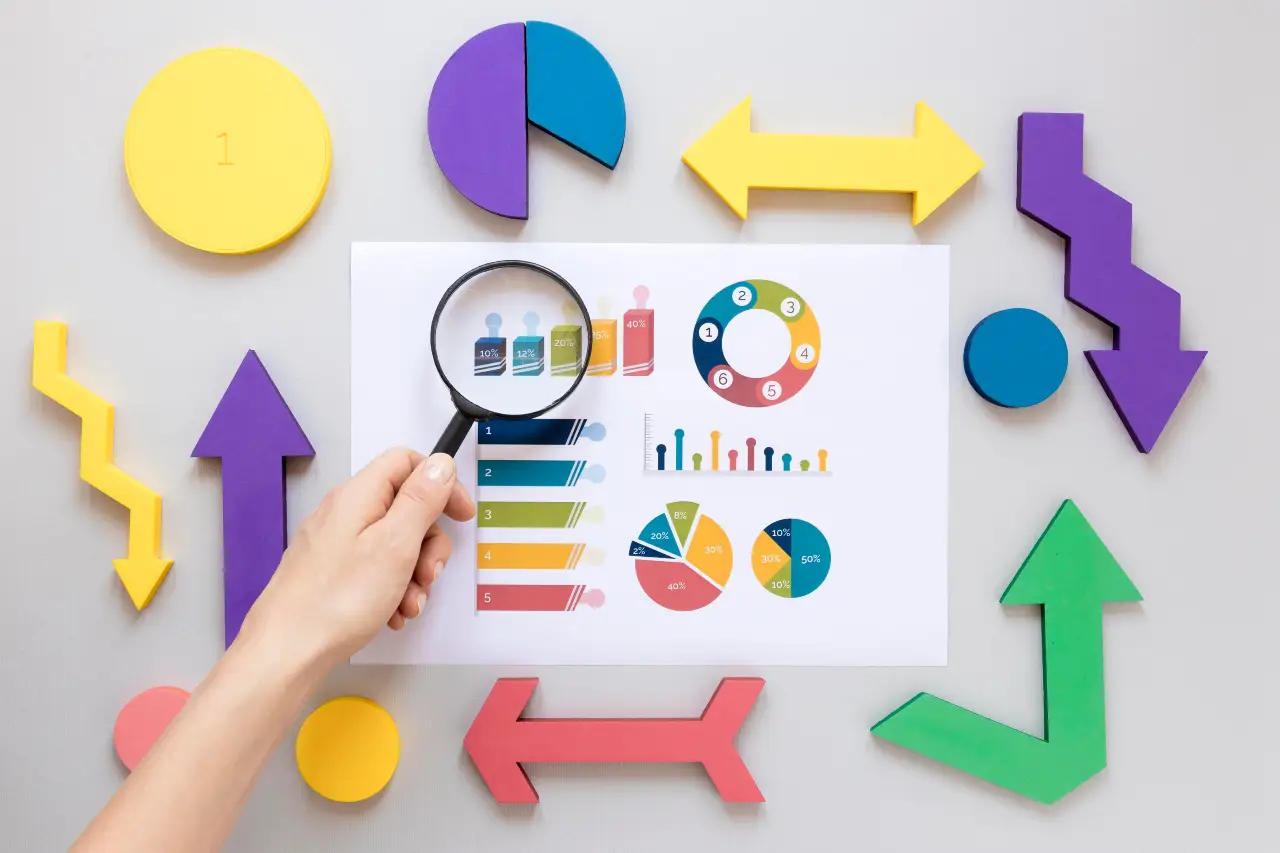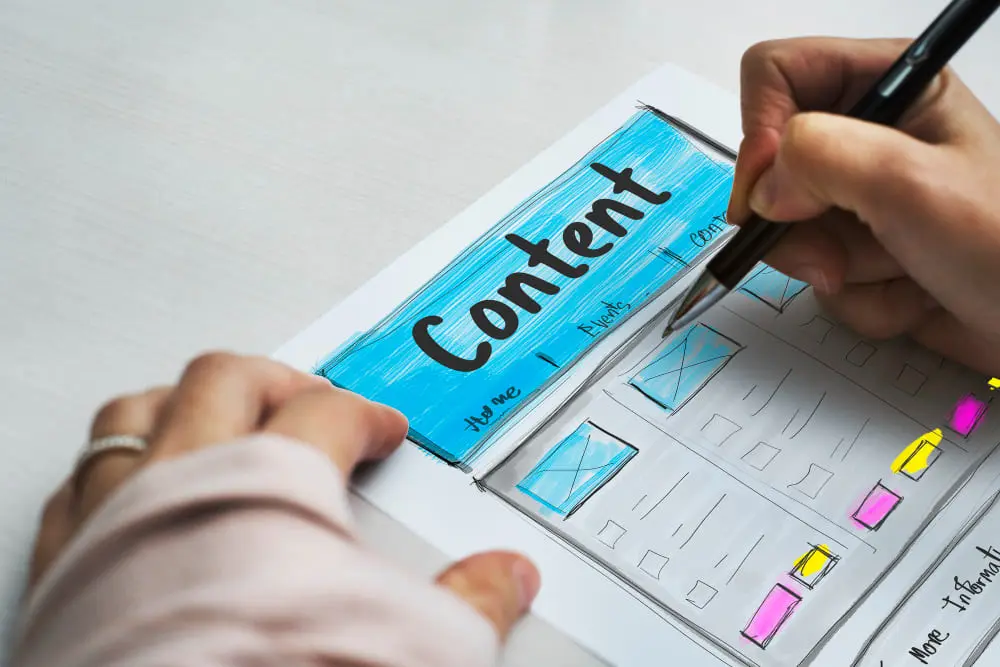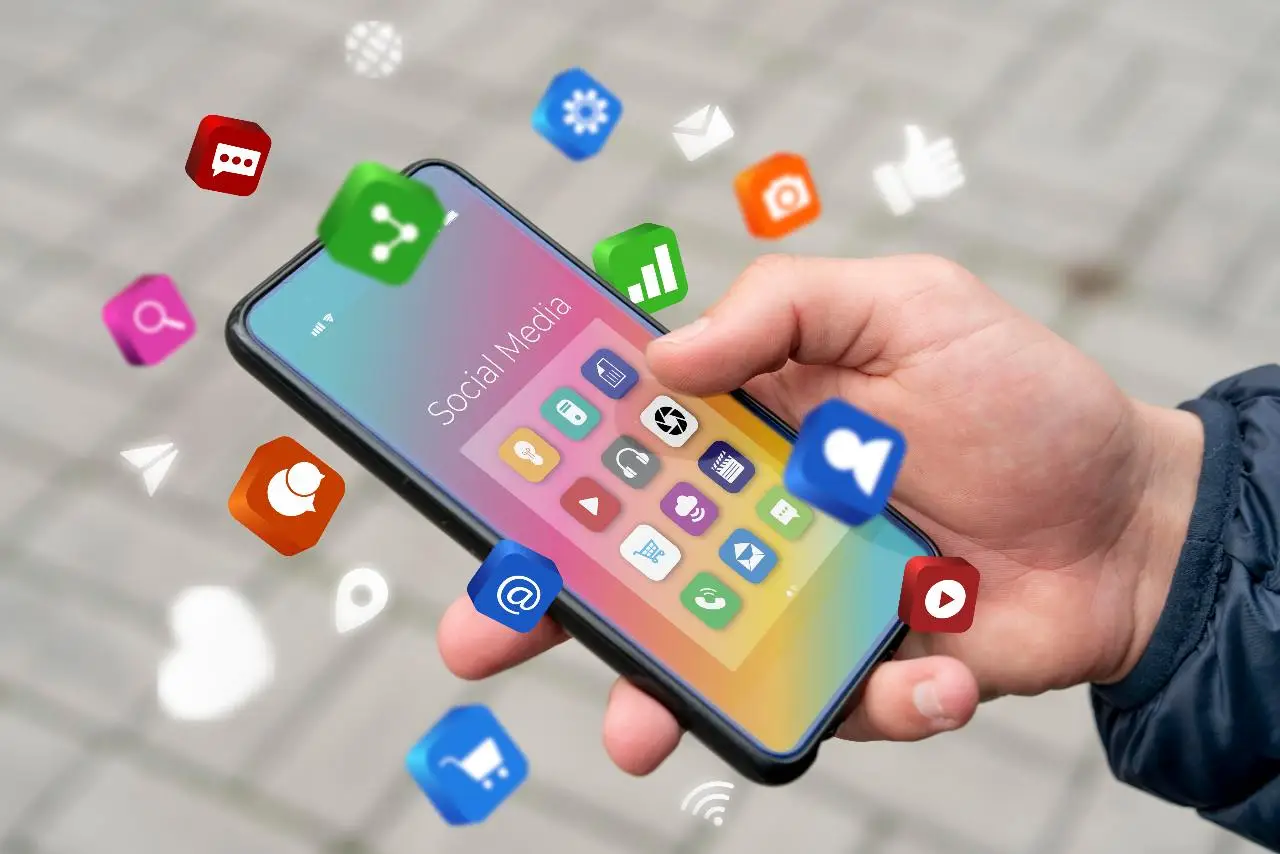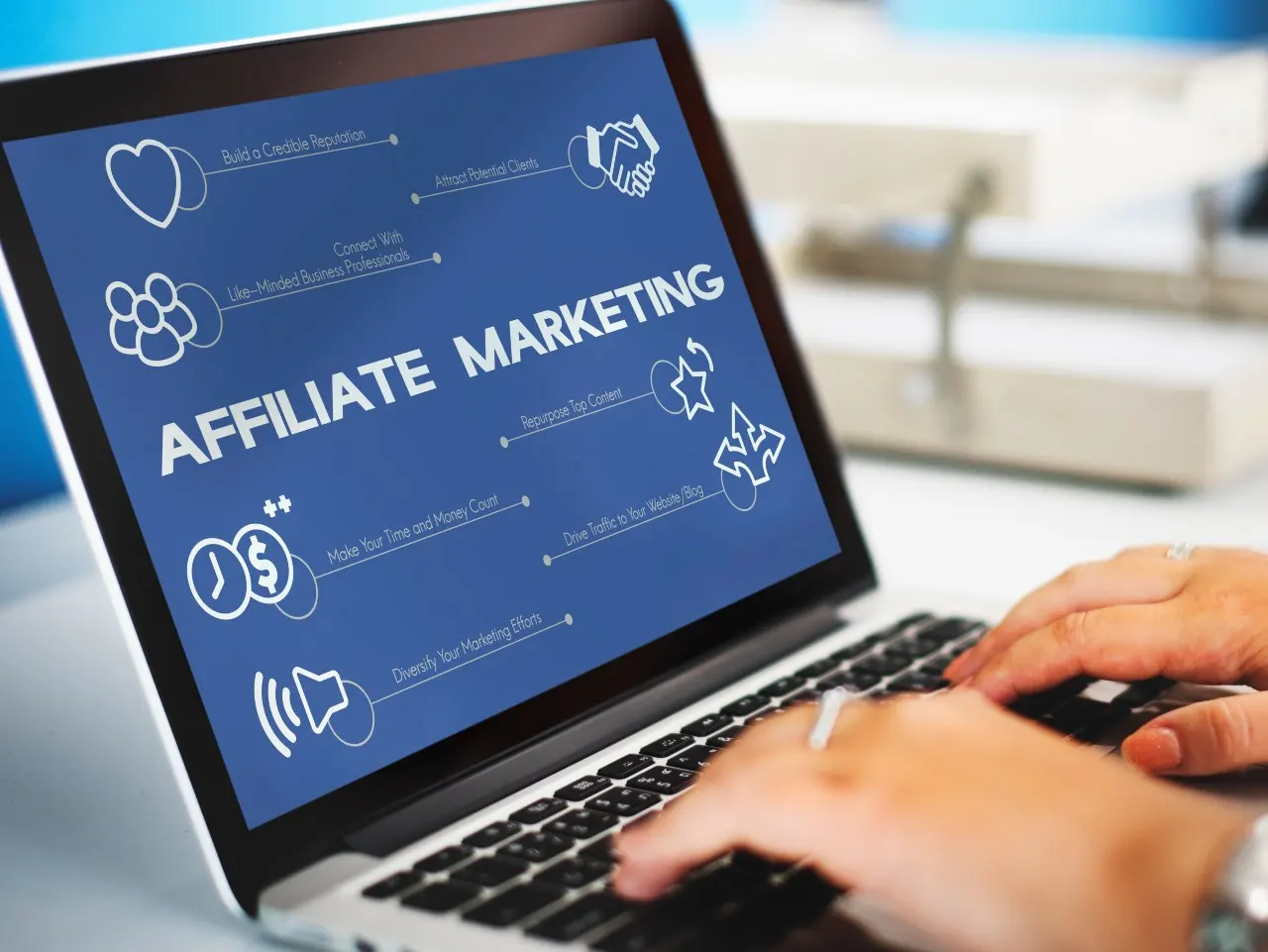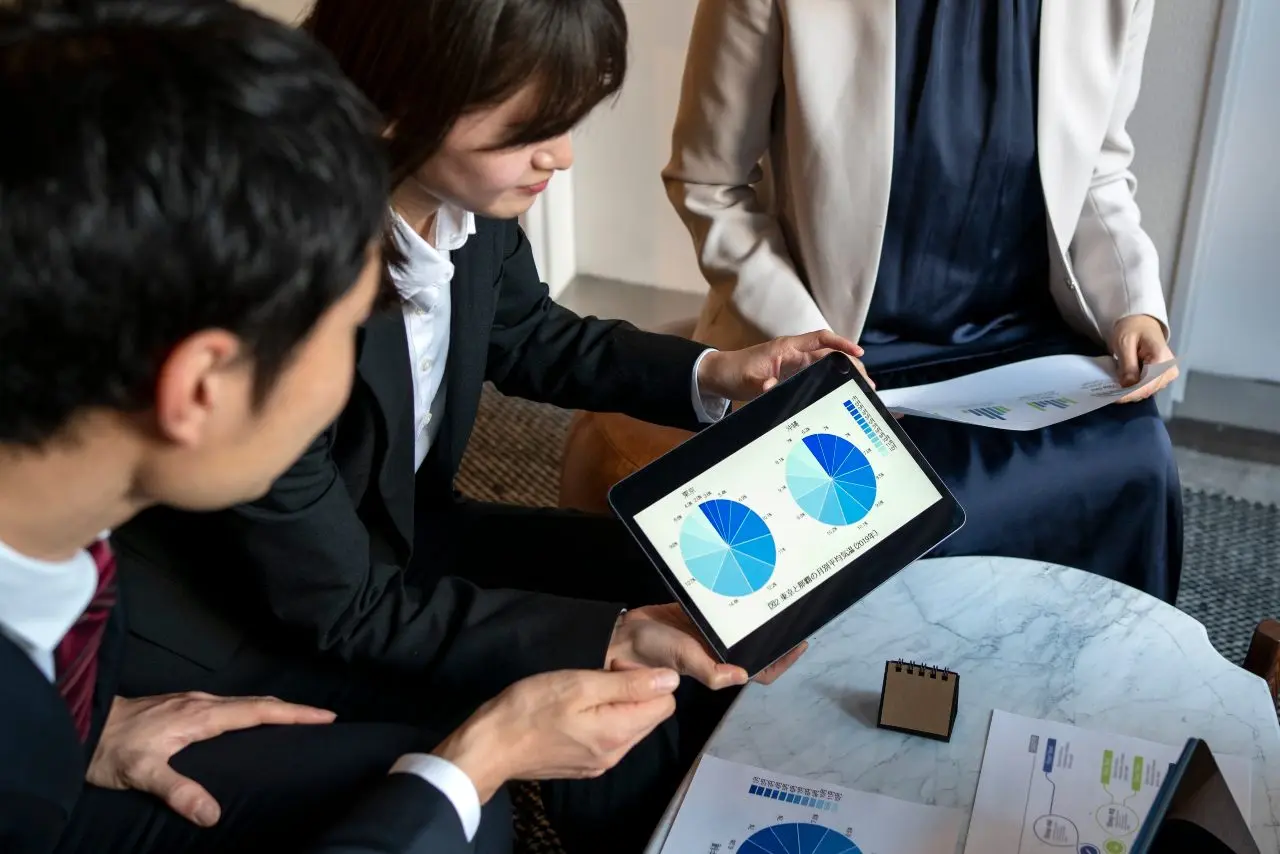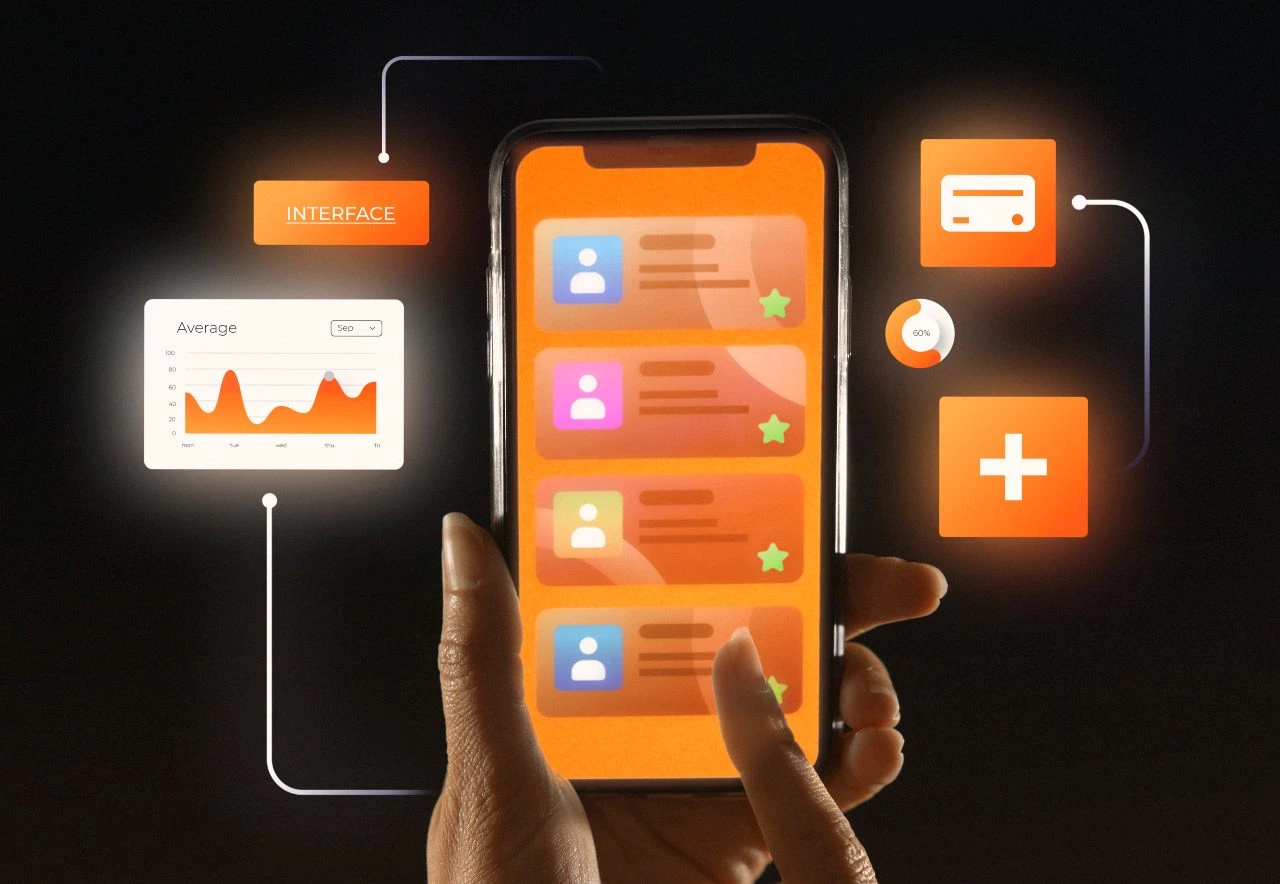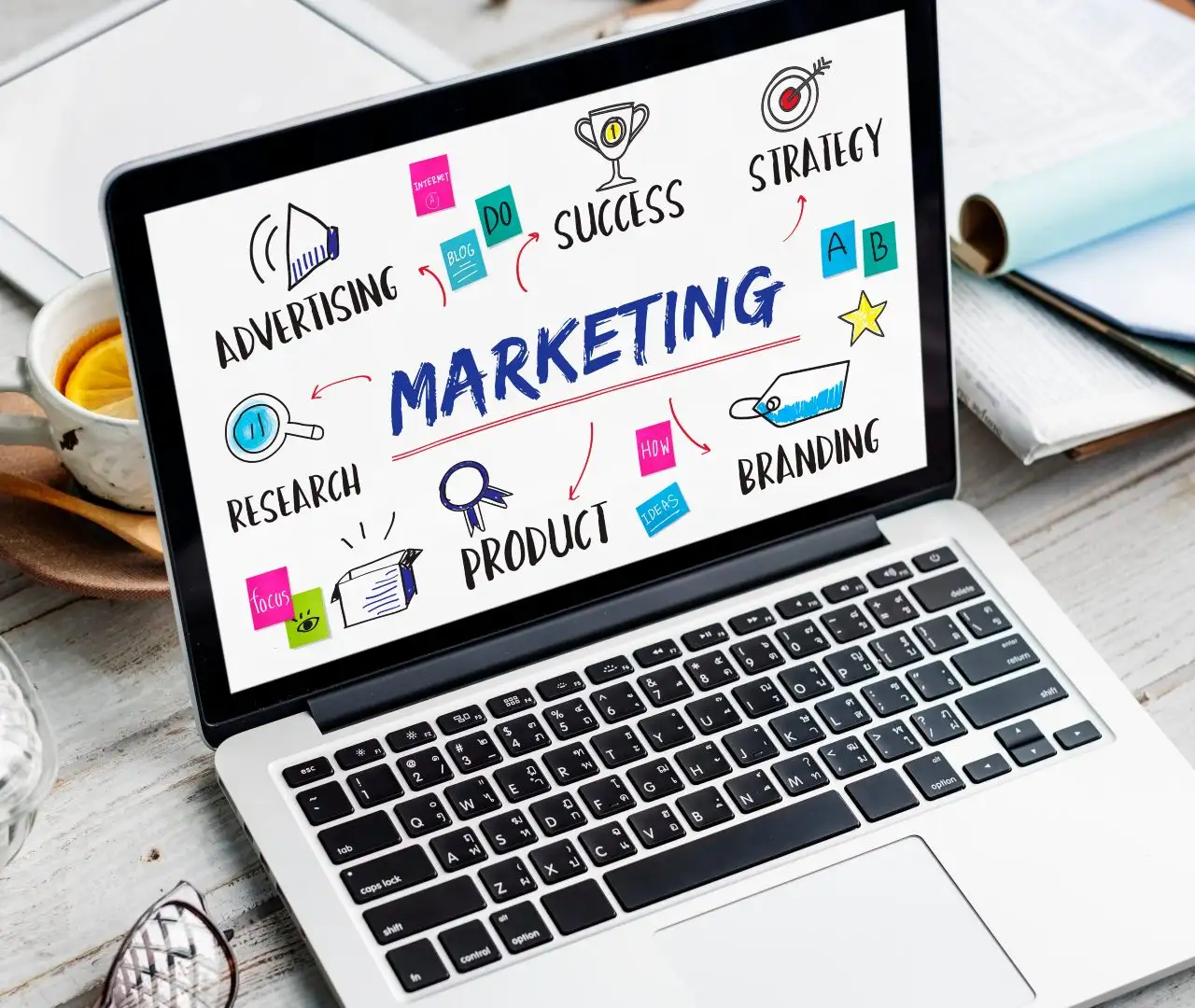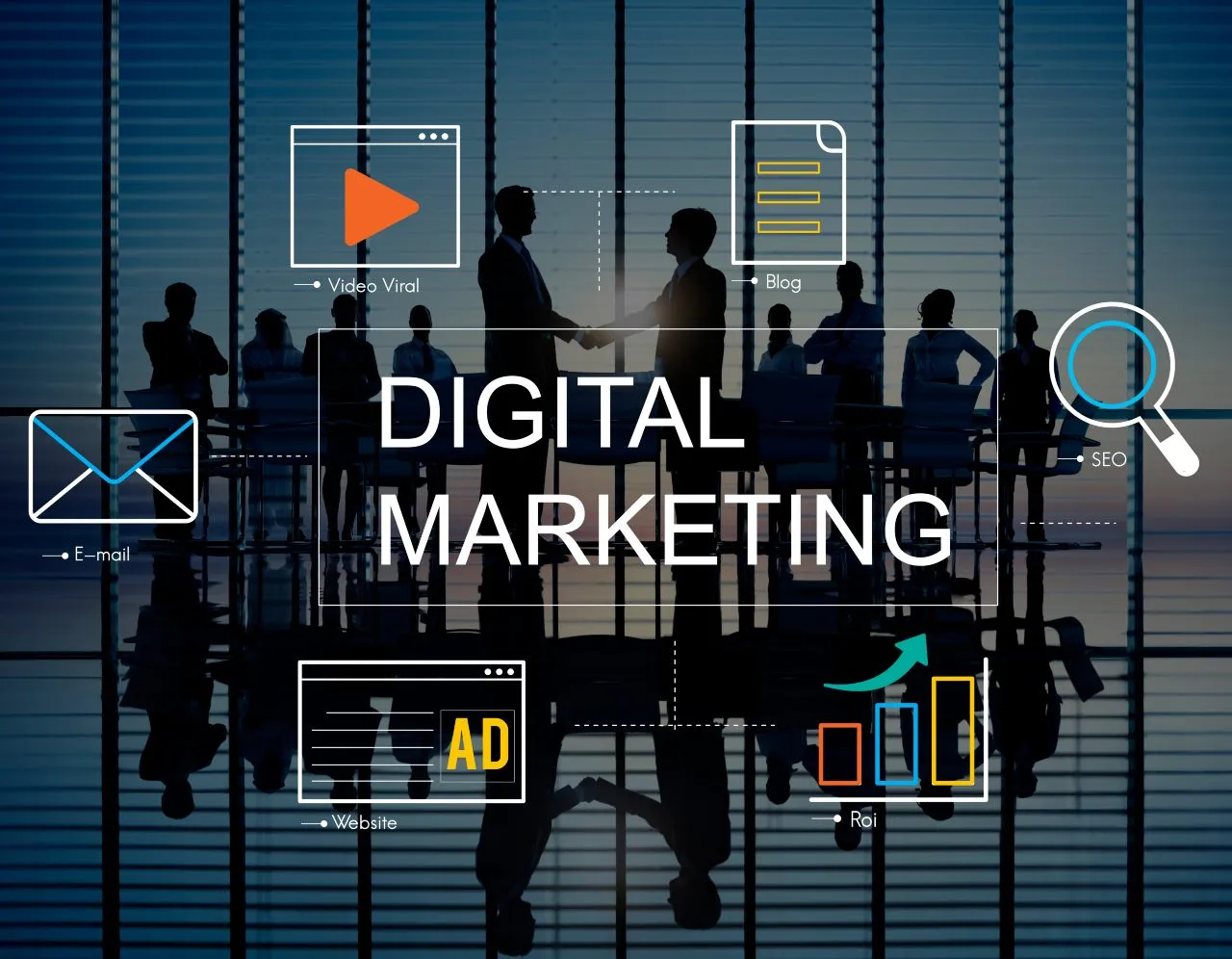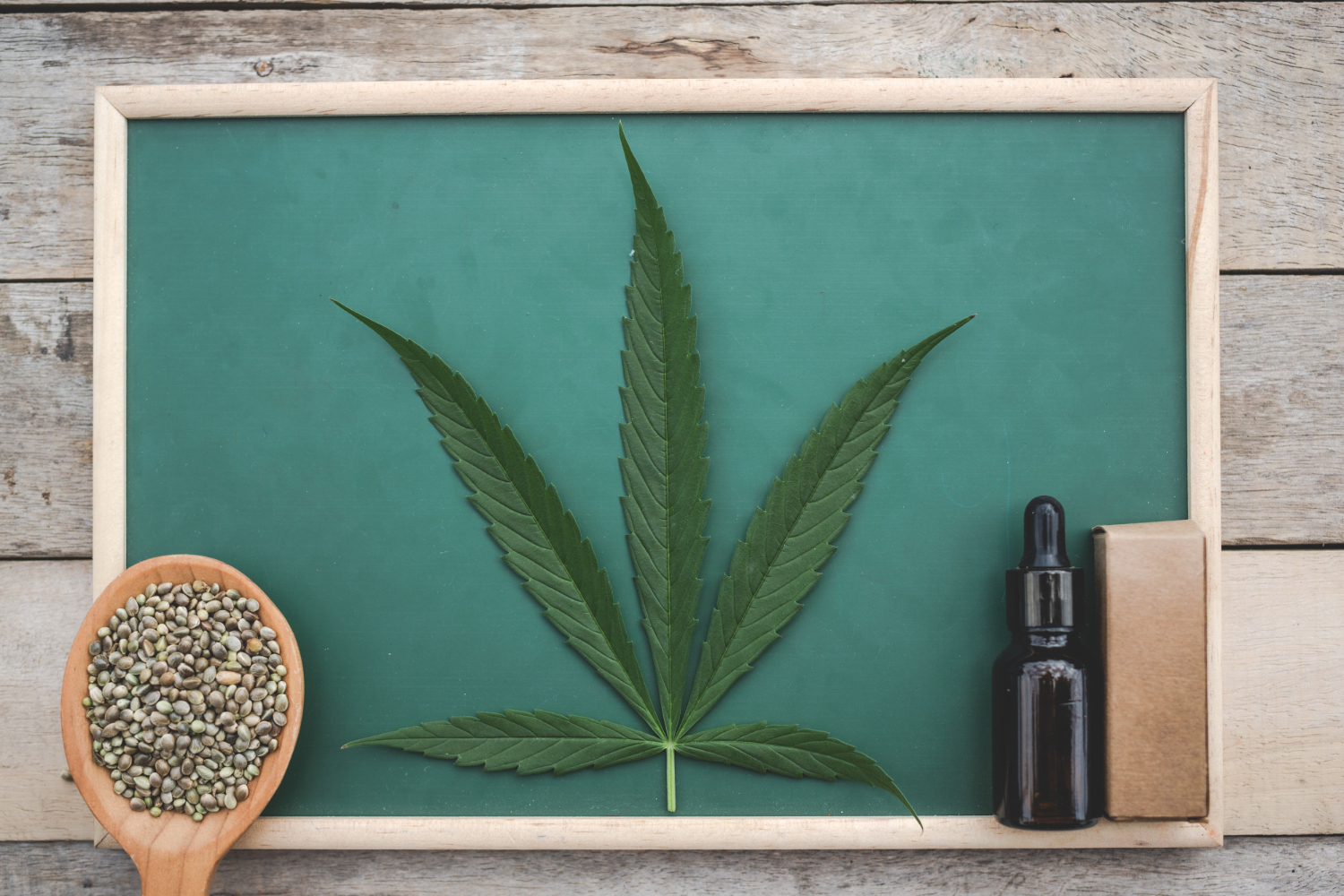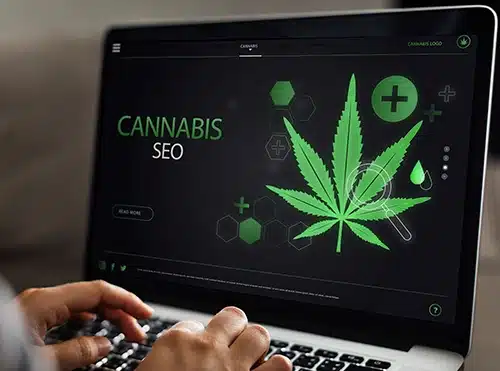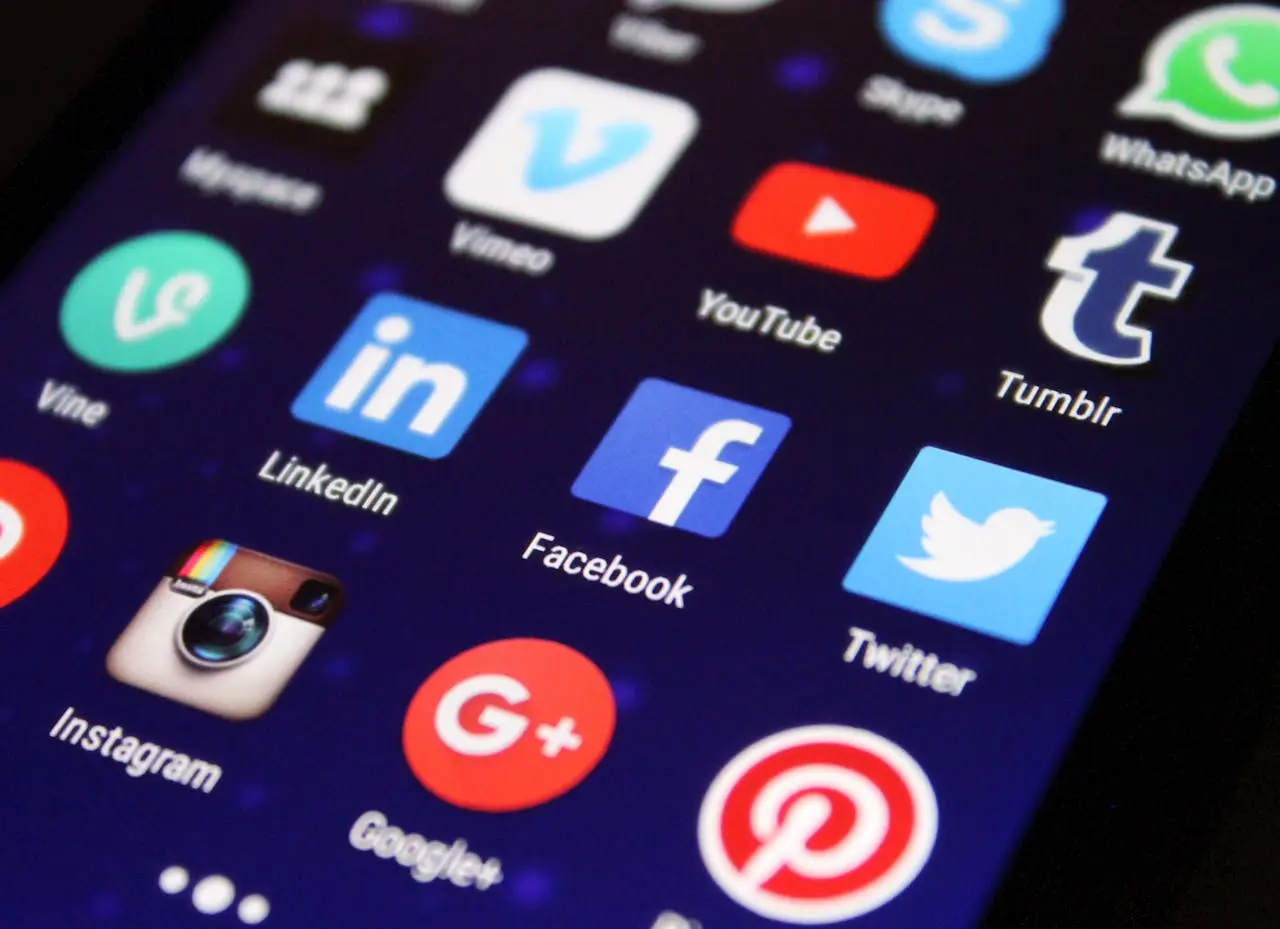Listen to article
Are you ready to level up your B2B game? As we move towards 2025, understanding the key trends and strategic priorities in B2B marketing is more critical than ever. The landscape is shifting, and staying ahead means knowing where to invest your resources and how to measure success.
From leveraging AI and optimizing content creation to understanding evolving buyer behaviors, B2B marketers face a dynamic environment. But with increased budgets comes greater scrutiny—ROI is the name of the game. How can B2B marketing performance increase?
In this article, we’ll dive into the insights and benchmarks shaping B2B marketing performance in 2025, providing you with the knowledge and strategies to thrive in this competitive landscape.
AI’s Game-Changing Role in Elevating B2B Content ROI
Across the B2B marketing landscape, AI is rapidly becoming the secret weapon for teams striving to do more with less. Rather than simply automating basic tasks, smart marketers are turning to AI to solve core challenges: resource constraints, pressure for faster output, and the demand for personalized, high-impact content. The data tells a compelling story about how quickly these investments are paying off.
- 68% of businesses report a notable boost in their content marketing ROI since bringing AI into their strategies. Read more.
- 63% of content writers have slashed their weekly content development time from up to 20 hours to just 10 hours, thanks to AI-powered tools. See details.
- Marketers are tapping AI to produce a variety of formats, including blog posts (58%), social posts (55%), and short articles (49%)—with top cited advantages being speed and help overcoming creative blocks. Source.
- 85% of marketers agree AI has improved content quality, enabling deeper personalization and stronger resonance with target audiences. View the research., Backup source.
- 64% of marketers are already harnessing AI for content creation. More here.
- 35% of B2B marketers have plans to further expand their AI investments to sharpen their marketing results. Check the report.
It’s clear: AI isn’t just a flashy upgrade—it’s fast becoming essential for B2B content teams seeking an edge in crowded markets. As more marketers embrace these tools, the bar for quality, speed, and personalization only gets higher. To stay competitive, think beyond automation and use AI as a creative partner to experiment with new formats and deeply tailor content journeys to your audience.
Pro Tip:
To unlock true ROI from AI, integrate tools that allow you to customize outputs—train them on your brand voice, refine prompts with audience data, and leverage analytics to iterate quickly. The marketers who combine AI’s efficiency with human insight will build content engines that not only scale, but truly resonate.
Where B2B Marketers Are Doubling Down: Channels & Content That Drive Results
Rather than spreading budgets thin, B2B marketing leaders are making calculated bets on channels and tactics that deliver measurable value. The industry’s current playbook leans heavily on highly-targeted content, social ad investments, and trusted vehicles like email newsletters to engage hard-to-reach decision-makers. The race isn’t just about being everywhere—it’s about doubling down on what works and scaling it smartly.
- According to a May 2024 report, B2B marketers are primarily investing in advertising (19%) and content (17%), a trend expected to continue. Source
- B2B social ad spending is predicted to increase by 46.2% in 2025, reaching $9.66 billion, indicating a significant investment in social media marketing. Source
- A substantial 81% of B2B marketers utilize email newsletters as their main content marketing tool. Source
- Approximately 79% of B2B marketing companies and agencies reported that email was their most successful channel for content distribution as of 2023. Source
- Email marketing is considered a key tool by 73% of marketers in their content marketing efforts. Source
- Email marketing revenue has been steadily increasing since 2020 and is projected to reach $13.69 billion by 2025, a significant rise from $7.5 billion in 2020. Source
- Among US B2B marketers, 50% consider email marketing the most impactful component of their multichannel strategy, highlighting its effectiveness. Source
- Around 23% of B2B marketers find organic search to be the most effective channel for driving revenue. Source
- Websites and SEO, along with virtual events, are considered the most powerful marketing channels for lead generation by 45% of B2B marketers. Source
- Virtual events, webinars, and online courses have been identified as the most effective tactics by 58% of marketers. Source
- Besides virtual events, research reports, whitepapers, case studies, and long-form articles are among the top five marketing tactics uniquely suited to B2B marketing. Source
What’s fueling these choices? B2B buyers continue to demand in-depth, relevant insights and accessible experiences—whether it’s delivered via their inbox, a thought-provoking webinar, or a well-optimized website. Notably, while flashy new channels pop up frequently, tried-and-tested tactics like email and educational long-form content are consistently delivering pipeline and loyalty. Savvy marketers pair these classics with fresh investments in paid social and virtual engagement, ensuring every dollar spent supports both reach and relationship-building.
Pro Tip:
Maximize your ROI by marrying high-value content—such as webinars, research reports, or in-depth guides—with segmented email campaigns and paid social amplification. Don’t just create content; develop a distribution plan that aligns each asset with the channel where your audience is most engaged. This multi-pronged approach can dramatically accelerate your funnel and extend your brand’s influence across the buying committee.
Where B2B Marketing Dollars—and Attention—Are Headed Next Year
As B2B marketers gear up for 2025, the laser focus isn’t just on spending more—it’s about investing smarter. Amid economic uncertainties and shifting buyer behavior, leaders are reimagining how to balance immediate pipeline growth with longer-term brand health and technological innovation. For teams looking to make every marketing dollar count, understanding how peers are prioritizing and allocating budgets offers a valuable competitive lens.
- The top priority for B2B marketers is growing a high-quality lead pipeline, with 37% placing it at the forefront of their strategic efforts. Source
- Data-driven marketing is gaining ground: 33% of B2B marketers are focused on leveraging analytics for better decision-making and performance measurement. Source
- Building relationships with new customers is a strategic focus for 32% of B2B marketers. Source
- On average, B2B companies dedicate 9.7% of their total budget to marketing. Source
- A notable 68% of B2B marketing leaders are working with bigger budgets than last year. Source
- 90% of B2B marketing leaders feel their budget is well-aligned with overall revenue targets and growth plans. Source, Source
- Marketers are spreading their budgets across key pillars: advertising (19%), content (17%), tools and technology (16%), and personnel (12%). Source
- Brand is making a comeback, with 67% of B2B marketers increasing brand-building investments, while 64% are allocating more resources to customer experience. Source
- Content marketing is set for a boost: 45% of companies will increase spend in this area, and 42% will hold steady. Source
- Content programs now command 26% of the average B2B marketing budget. Source
Today’s B2B leaders are raising the bar—not just by upping budgets, but by clearly linking investments to measurable outcomes. The sharpened focus on lead quality, scalable data strategies, and richer customer relationships reflects a market where both precision and long-term vision matter. As expectations grow to prove ROI, those who blend performance metrics with bold brand storytelling and CX innovation will be best positioned to break through in a competitive landscape.
Pro Tip:
Don’t just follow where budgets are trending—use these insights to advocate for future-proof initiatives. Pair high-ROI tactics with investments in automation, analytics, and customer-centricity to demonstrate value and secure ongoing executive buy-in.
Shifting Budgets and Bold Moves: Where B2B Content Is Headed
Amid mounting pressure to deliver measurable results, B2B marketers aren’t just keeping pace—they’re ramping up their investment in content that both educates and stands out. Gone are the days of generic blog posts and endless whitepapers; today’s buyers crave value-packed experiences, especially in formats that are easy to digest, like video and authentic thought leadership.
- Content marketing is projected to reach $107 billion in revenue by 2026, up from $82.3 billion in 2024. Source
- Nearly 45% of B2B marketers expect to boost their content marketing budget in 2024, with video (69%) and thought leadership (53%) topping the list of investment priorities. Source
- 58% of B2B marketers have seen a direct increase in sales and revenue thanks to their content marketing initiatives over the past year. Source
- Video plays a starring role in the buyer’s journey—88% of B2B buyers have watched product or service videos in the past three months to support their decisions. Source
- For 14% of B2B buyers, video is the single most valuable content type during the decision-making phase. Source
- The momentum behind short-form video shows no signs of slowing, with 90% of marketers planning to increase or sustain their investment in this high-ROI format. Source
- 61% of B2B marketers are proactively working to differentiate their content from competitors. Source
Takeaway: B2B marketing is undergoing a creative renaissance, where budget growth is matched by a push for more distinct, engaging, and conversion-driven content. The clear winners will be those who move beyond “me-too” tactics to deliver videos and thought leadership assets that genuinely resonate with target audiences and elevate their brand above industry noise.
Pro Tip:
Don’t just follow content trends—shape them. Invest in original research, customer stories, and snackable videos that address real buyer pain points. Leverage interactive elements and data-driven insights to build content experiences that set your brand apart and leave a lasting impression.
The Real ROI of Social Media in B2B Sales Enablement
Once seen as a secondary channel for B2B engagement, social media has carved out a critical role in driving revenue and accelerating decision cycles. Today’s buyers increasingly rely on digital touchpoints for research, which means your brand’s social presence doesn’t just build awareness—it directly influences pipelines and purchasing behavior. For B2B marketers, social platforms are no longer optional—they’re a primary engine for sales enablement and thought leadership.
- Over 70% of B2B marketers who have actively used social media over the past year have seen improvements in sales, demonstrating social media’s positive impact on their bottom line. Source
- LinkedIn is considered the most effective social media platform by 78% of B2B marketing companies for distributing their content, while Twitter and Facebook are used by 48% and 42% respectively. Source
- An overwhelming 92% of content marketers consider LinkedIn the premier platform for promoting their content. Source
- About 77% of viewers indicated that a short video they watched on social media influenced them to make a purchase or download something. Source
What’s clear is that B2B social strategies are shifting from static posts to dynamic, conversion-driven content—especially on LinkedIn, where stakeholder engagement is highest. Short-form video isn’t just a B2C phenomenon; it’s becoming a must-have for capturing attention and sparking action among B2B audiences. To generate real buyer intent, align your content format with the preferred channels of your ideal customers.
Pro Tip:
Don’t just repurpose blog posts—craft platform-specific video and visual content that addresses real-world industry challenges, and lean into LinkedIn’s publishing and targeting features to amplify reach with precision. Consistent, data-driven social engagement can do more than nurture leads—it can tip deals across the finish line.
Metrics That Redefine B2B Content Success
With tightening budgets and heightened pressure to prove ROI, B2B marketers are shifting their attention away from vanity metrics and zeroing in on KPIs that map directly to sales impact and brand authority. The days when raw traffic or subscriber counts were enough to impress stakeholders are fading—today, the spotlight is on metrics that capture true audience engagement and drive business outcomes.
- Website engagement is now the top metric for B2B content performance, tracked by 69% of marketers, edging out conversions (67%), website traffic (65%), and email engagement (64%). Source
- Despite the ubiquity of social media, only 45% of marketers still use social sharing as a core KPI, while 60% identify web traffic as their most telling sign of content success. Source
- The quality of sales leads takes precedence for 51% of B2B marketers when evaluating marketing effectiveness. Source
- When it comes to measuring podcasting, B2B brands are encouraged to shift from superficial stats like downloads to more strategic outcomes—content engagement, brand mentions, lead generation, and relationship building. Source
- There remains a disconnect between perception and reality: while 52% believe their content brings in leads, only 33% are confident it translates into revenue. Source
- Among organizations excelling at content marketing, 54% credit their success to strong alignment between their chosen metrics and overall content goals. Source
As stakeholders expect greater accountability, the most competitive B2B teams are prioritizing metrics that go beyond surface-level indicators and point directly to business growth. Shifting focus to engagement quality, relationship metrics, and bottom-funnel performance not only elevates your reporting but also sharpens your content strategy—helping you invest in what truly moves the needle.
Pro Tip:
Take the time to regularly revisit your metrics and ensure they ladder up to evolving business priorities. Consider implementing multi-touch attribution models or using advanced analytics platforms to more accurately connect content consumption with revenue impact. This way, you’ll have both the data and the narrative to earn buy-in—and outperform the competition. If your team needs additional support aligning performance metrics with strategic goals, exploring B2B website strategy can help optimize your approach and ensure your content drives measurable results.
Navigating Martech Overload: Integration as a Competitive Advantage
As the martech landscape explodes with new solutions, B2B marketers are juggling more platforms and tools than ever before. This abundance can offer powerful capabilities—but without proper integration, it often leads to data silos, misaligned metrics, and mounting operational headaches. Today’s high-performing teams are shifting focus from chasing every new tool to mastering a connected ecosystem that delivers clear, actionable insights.
- A significant 64% of marketers feel that their martech stacks have become overly complex in recent years, highlighting the growing need for integrated solutions. Source
The takeaway? Streamlined martech stacks aren’t just about reducing headaches—they’re about maximizing your team’s agility and decision-making power. Companies that regularly audit their software, remove redundancies, and invest in integrations position themselves to react faster to market changes and extract more value from every tool they deploy.
Pro Tip:
Schedule quarterly martech audits—invite both marketers and IT stakeholders to review tool usage, integrations, and data flow. Use this as an opportunity not only to cut costs, but to champion platforms that foster collaboration and deliver consolidated reporting. This habit will ensure your stack remains lean, measurable, and future-ready.
Streamlining Workflows and Personalization: The Cornerstones of B2B Content Delivery
In B2B marketing, the bar for content relevance and delivery speed keeps rising—buyers expect tailored insights at just the right moment. Leading organizations aren’t just creating more content; they’re architecting seamless internal workflows and investing in smart distribution methods to ensure their marketing efforts cut through the noise.
- 70% of B2B organizations excelling in content marketing credit their success to having excellent or very good content creation project workflows. Source
- 60% of B2B marketers make it a frequent or consistent priority to deliver the right content to the right person at the right time. Source
These findings show that process isn’t just a box to tick—it’s the difference between content that converts and content that gets ignored. As buyer journeys become more complex, B2B marketers who invest in workflow optimization and advanced personalization stand out from those relying on outdated, one-size-fits-all tactics.
Pro Tip:
Audit your current content creation and delivery process. Look for bottlenecks, get feedback from your team, and explore automation tools or project management platforms to boost efficiency. Pair this with personalization engines that dynamically tailor messages for different audience segments—you’ll see stronger engagement and a faster route from first touch to closed deal.
Mapping Content to Every Stage of the SaaS Buyer Journey
Modern B2B buyers are increasingly self-directed, researching options long before they speak to a sales rep. For SaaS companies, the difference between mediocre results and high-performing growth often comes down to how well your content guides prospects at each step of their decision-making process. Siloed blog posts or sporadic campaigns rarely cut it—what’s needed is a content operation built with purpose, mapped directly to the sales funnel.
- Successful B2B SaaS content strategies hinge on intentional planning and a well-organized calendar that directly supports your sales funnel. Source
The winners in the SaaS space aren’t just publishing content—they’re orchestrating it, ensuring that every article, guide, and resource meets buyers where they are, whether that’s discovery, evaluation, or justifying investment. Building a structured calendar keeps teams accountable, avoids content gaps, and ensures messaging remains relevant at every stage.
Pro Tip:
Start by auditing your current content against each sales funnel stage. Identify gaps where prospects are dropping off or not receiving the guidance they need, then prioritize those topics in your upcoming calendar. Using collaborative tools like Airtable or Trello can help keep your planning transparent and agile as your funnel evolves.
Audience-Focused Strategies Take Center Stage in B2B Marketing
Rather than flooding prospects with generic messaging, top-performing B2B teams are doubling down on content shaped by genuine audience insights. The modern B2B landscape favors relevance over volume: marketers who truly understand their buyers’ industries, challenges, and aspirations consistently outperform competitors still clinging to brand-centric campaigns.
- A significant 67% of B2B marketers prioritize audience-focused content creation over brand-centric content. Source
Prioritizing audience-centricity is more than just a trend—it’s a competitive advantage. Content aligned with buyer interests not only attracts attention but also builds trust and accelerates the path to purchase. As decision-makers grow more discerning and self-directed, the brands that anticipate and answer real business needs set themselves apart.
Pro Tip:
Dive deep into your audience’s world by leveraging buyer personas, social listening, and direct feedback loops. Continually adapt your content calendar to highlight their evolving challenges, and don’t hesitate to experiment with formats such as webinars, industry reports, or case studies tailored for specific segments.
Decision Timelines and Budget Pressures: What’s Really Driving B2B Buyer Caution?
The B2B buying landscape isn’t just changing—it’s becoming more deliberate and risk-averse. Increased economic scrutiny and greater internal oversight mean that every deal is reviewed through a microscope. For marketers, this shift underscores the importance of being a trusted partner in the decision process, not just a vendor with a pitch.
- B2B purchases are now taking significantly longer, primarily due to more stakeholders joining the decision-making process (26%), widespread budget freezes (34%), and a stronger emphasis on detailed ROI analysis (41%). Source
- 34% of B2B buyers have pushed back purchases because of budget freezes, while 25% have less budget available than last year. Source, Source
What does this mean for your marketing strategy? The rise in buying committees and budget scrutiny places a premium on resources that help buyers build a bulletproof business case. Sales cycles may slow, but brands that empower stakeholders with robust ROI documentation, clear use-case content, peer validation, and transparent pricing will rise to the top of the shortlist—especially when CFOs and procurement teams have final say.
For businesses looking to streamline their approach, adopting full-service marketing solutions can be a game-changer. These services integrate a wide range of strategies, from SEO to email marketing, ensuring a cohesive and efficient marketing plan that addresses the evolving needs of the B2B buying landscape.
Pro Tip:
Equip your champions within buying groups with customizable ROI calculators, industry benchmarks, and shareable one-pagers tailored for finance and operations leaders. Making it easier for them to advocate internally could be the difference between a stalled deal and a signed contract.
Where B2B Marketers Struggle (and Succeed) in Proving Performance
As marketing budgets face tighter scrutiny, B2B marketers are under increasing pressure to connect their efforts to meaningful business outcomes. But the landscape is complex—while standard metrics like web traffic and email engagement offer surface-level insights, executives want more than vanity numbers. The real challenge? Bridging the gap between engagement metrics and tangible revenue impact, so marketing teams can secure buy-in and drive smarter investments.
- The most commonly tracked B2B content metrics include conversions, email engagement, website traffic, website engagement, and social media analytics. Source
- 60% of B2B marketers measure success based on web traffic, 51% emphasize sales lead quality, and 45% monitor social shares. Source
- Demonstrating marketing ROI remains elusive—71% of marketing executives say attributing social and content marketing to revenue is a top challenge. Source
- Still, over 70% of B2B marketers can show, using metrics, how content marketing has boosted engagement and increased their lead generation. Source
- 51% are able to demonstrate the link between content marketing and increased sales. Source
- Only 25% of B2B marketers can connect content marketing efforts directly to a decreased cost of customer acquisition. Source
- Surprisingly, 47% of B2B organizations skip measuring content marketing ROI altogether—often citing a lack of tools, processes, or justifiable frameworks. Source
Takeaway: For B2B marketers, the race isn’t just to collect more data—it’s to tell a persuasive story that aligns marketing performance with business growth. Measuring website clicks and downloads is a good starting point, but the organizations that win budget and influence are those that track pipeline impact, sales velocity, and customer lifetime value. Investing in analytics tools and cross-departmental collaboration can turn isolated metrics into insights that matter to leadership.
Pro Tip:
Don’t let data overwhelm you—start by mapping key metrics directly to specific business goals, whether that’s sales growth, lead quality, or customer retention. Platforms like HubSpot, Salesforce, and Google Analytics can help centralize your data and automate ROI reporting, freeing you up to focus on strategy and optimization.
Conclusion
As B2B marketing continues to evolve, the data highlights a clear roadmap for success in 2025 and beyond. From the integration of AI-driven content creation to the prioritization of audience-centric strategies, there’s an undeniable shift towards smarter, more efficient marketing practices. Marketers are not only investing heavily in content, social media, and email campaigns but are also doubling down on measurable results—ensuring that every dollar spent ties back to revenue and growth.
However, navigating this landscape demands more than just following trends. With buyers taking longer to make decisions and martech stacks growing increasingly complex, the need for streamlined workflows, personalized content, and robust ROI measurement has never been more critical. To stay competitive, B2B marketers must embrace data-driven strategies, continuously refine their KPIs, and remain laser-focused on aligning their efforts with customer needs and business objectives.
Are you ready to take your marketing performance to the next level? If you’re ready to supercharge your business, don’t hesitate to get in touch with our full-service marketing pros for a free quote. Let’s craft strategies that turn challenges into opportunities and lead to measurable success.
About How B2B Marketers Are Thinking About Performance in 2025
This guide was written by the Scopic Studios team and reviewed by Araksya Hakobjanyan, SEO Lead at Scopic Studios.
Scopic Studios delivers exceptional and engaging content rooted in our expertise across marketing and creative services. Our team of talented writers and digital experts excel in transforming intricate concepts into captivating narratives tailored for diverse industries. We’re passionate about crafting content that not only resonates but also drives value across all digital platforms.
Note: This blog’s feature image is sourced from Freepik.














